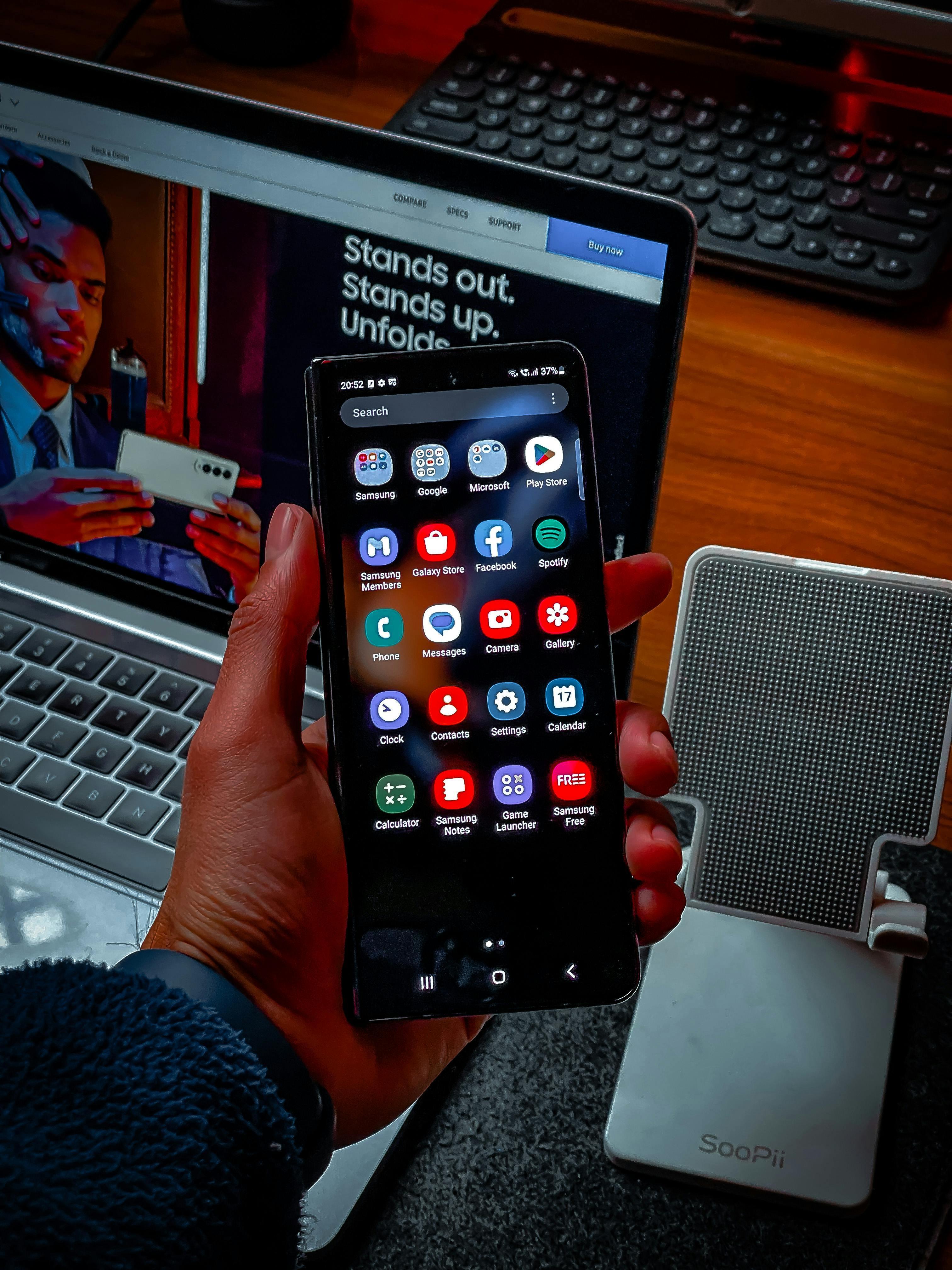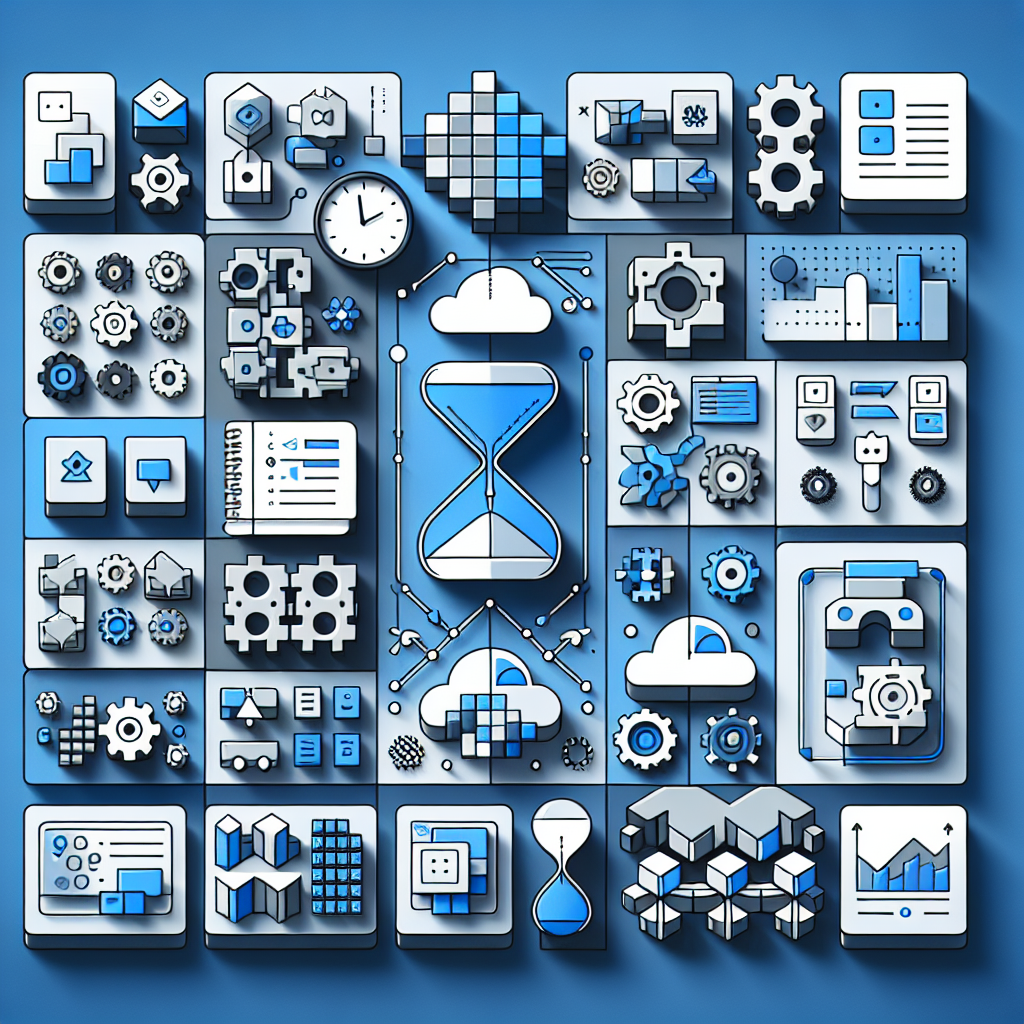Are you looking for a simple and efficient way to accelerate your workflows? Look no further than Azure Logic Apps Templates. With these 10 templates, you can easily automate and streamline your processes, saving you valuable time and effort. From data integration to event-driven scenarios, these templates provide a wide range of options to suit your specific needs. Whether you’re a beginner or an experienced user, these Logic Apps Templates are here to simplify your workflows and boost your productivity. Say goodbye to tedious manual tasks and hello to efficient automation with Azure Logic Apps Templates.

Introduction
Welcome to this comprehensive guide on Azure Logic Apps Templates! If you’re looking to streamline and automate your workflows, you’ve come to the right place. Azure Logic Apps offers a range of pre-built templates that can help you quickly get started with various tasks, from email notifications and database integration to social media posting and machine learning. In this article, we’ll cover the ins and outs of these templates, so you can leverage them to boost your productivity and efficiency.
Getting Started
Before we delve into the specific templates, let’s first understand how to create an Azure Logic Apps account and explore the basics of working with Logic App templates.
Creating an Azure Logic Apps Account
To get started with Azure Logic Apps, you’ll need an Azure account. If you don’t have one already, you can sign up for a free trial or a paid subscription. Once you have your Azure account set up, you can create an Azure Logic Apps account by following these simple steps:
- Sign in to the Azure portal.
- In the left-hand menu, click on “Create a resource”.
- In the search bar, type “Logic Apps” and select “Logic Apps” from the suggested results.
- Click on “Create” to begin the creation process.
- Fill in the required details, such as the name for your Logic Apps account and the subscription you want to use.
- Choose the resource group and the location for your Logic Apps account.
- Review and validate the settings, then click on “Create” to create your Logic Apps account.
Understanding Azure Logic Apps Templates
Azure Logic Apps Templates are pre-built workflows that provide a head start for various common tasks. They are designed to accelerate the development process by providing a foundation that can be customized to meet your specific requirements. These templates are built using the Logic Apps Designer, where you can visually configure the workflow and define the actions and triggers.
Each template consists of one or more connectors that enable integration with other services, such as email, databases, file storage, social media platforms, web services, event sources, and even machine learning capabilities. These connectors allow Logic Apps to interact with these services and perform actions based on triggers or events.
Now that you have a basic understanding of Azure Logic Apps and how they work, let’s explore some of the top templates available for workflow acceleration.

1. Email Templates
Emails play a crucial role in everyday business communication. With Azure Logic Apps, you can automate various email-related tasks to streamline your workflow.
Creating Email Notifications
The “Creating Email Notifications” template allows you to set up email notifications for various events. You can define triggers, such as the creation of a new record in a database, and configure the email action to send notifications to specific recipients. This template is particularly useful for scenarios where you need to keep your team or customers informed about important updates.
Email Attachment Processing
The “Email Attachment Processing” template enables you to automatically process email attachments. You can define triggers based on incoming emails with attachments and perform actions such as saving the attachments to a storage location, extracting data, or even triggering another workflow. This template can be handy for automating repetitive tasks, such as saving and organizing email attachments.
Email Forwarding
The “Email Forwarding” template allows you to automatically forward incoming emails to another recipient. You can define triggers based on specific criteria, such as keywords in the email subject or sender’s address. This template is ideal for scenarios where you need to redirect emails to another person or team for further action or processing.
2. Database Integration Templates
Integrating databases with your workflows can significantly enhance the efficiency of your organization’s data management processes. Azure Logic Apps offers several templates for seamless database integration.
Connecting to Azure SQL Database
The “Connecting to Azure SQL Database” template enables you to establish a connection with an Azure SQL Database. Once connected, you can define triggers based on events such as a new record being inserted or an existing record being updated. This template is valuable for scenarios where you need to automate tasks based on real-time changes in your database.
Integrating with MongoDB
The “Integrating with MongoDB” template provides a streamlined integration with MongoDB, a popular NoSQL database. With this template, you can define triggers and actions that allow you to work with MongoDB collections and documents. This integration can be especially useful if your organization relies on MongoDB for storing and retrieving data.
Using Azure Cosmos DB
Azure Cosmos DB is a globally distributed, multi-model database service that enables you to store and retrieve data at scale. The “Using Azure Cosmos DB” template simplifies the integration with Azure Cosmos DB by providing pre-built workflow components. You can define triggers and actions that interact with your Cosmos DB containers, facilitating efficient data management and retrieval.

3. File Management Templates
Efficient file management is essential for any organization. Azure Logic Apps offers templates that can automate various file-related tasks, providing a seamless file management experience.
Processing CSV Files
The “Processing CSV Files” template allows you to automate the processing of CSV files. You can define triggers based on the arrival of new CSV files in a specified location and perform actions such as parsing the data, transforming it, or even storing it in a database. This template can save you valuable time and effort when dealing with large amounts of data in CSV format.
Renaming Files
The “Renaming Files” template simplifies the process of renaming files. You can define triggers based on various criteria, such as the creation of a new file or the modification of an existing file. Using this template, you can automate the renaming process and enforce consistent naming conventions throughout your organization, enhancing file organization and retrieval.
Copying and Moving Files
The “Copying and Moving Files” template enables you to automate the movement and copying of files between different locations. You can define triggers based on events such as the creation of a new file or a file being modified. This template can be particularly useful when you need to centralize or distribute files across different systems, ensuring seamless file management.
4. Social Media Integration Templates
Social media platforms play a significant role in modern-day marketing and communication strategies. With Azure Logic Apps, you can integrate your workflows with various social media platforms, allowing you to automate social media posting and interactions.
Posting to Twitter
The “Posting to Twitter” template facilitates the automation of Twitter posts. You can define triggers based on specific events, such as the creation of a new blog post or a record being updated. Using this template, you can automatically post updates to your Twitter account, ensuring your audience stays informed about important news or events.
Publishing to Facebook
The “Publishing to Facebook” template enables you to automate the publishing of content to your Facebook page or profile. You can define triggers based on specific events, such as the completion of a blog post or the addition of a new product. This template allows you to streamline your social media presence by automatically sharing relevant updates and content on Facebook.
Sharing to LinkedIn
The “Sharing to LinkedIn” template allows you to automate the sharing of content on your LinkedIn profile or page. You can define triggers based on specific events, such as the publication of a new article or the addition of a new presentation. This template is ideal for individuals or organizations looking to maintain an active presence on LinkedIn by regularly sharing valuable content.

5. Web Service Templates
Integrating with external web services is often a requirement for organizations to streamline their workflows. Azure Logic Apps provides templates that simplify the integration with web services, allowing you to automate tasks and enhance your workflow efficiency.
Using HTTP Requests
The “Using HTTP Requests” template enables you to make HTTP requests to external services from your Logic App. You can define triggers based on specific events and configure the actions to interact with web services using GET, POST, PUT, PATCH, or DELETE methods. This template is versatile and can be used to interact with a wide range of web services, making it a valuable tool for automating various tasks.
Creating RESTful APIs
The “Creating RESTful APIs” template allows you to build and expose your own RESTful APIs using Azure Logic Apps. You can define triggers and actions that process incoming requests and generate appropriate responses. This template is particularly useful when you need to expose custom APIs to external systems or partners, enabling seamless integration and data exchange.
Working with SOAP APIs
The “Working with SOAP APIs” template simplifies the integration with SOAP APIs. You can define triggers based on specific events and configure the actions to interact with SOAP-based web services. This template offers an easy way to automate tasks that involve working with SOAP APIs, such as retrieving data from legacy systems or processing information from external sources.
6. Event-Driven Templates
Event-driven workflows allow you to automate tasks or actions based on specific events or triggers. Azure Logic Apps offers various templates for event-driven scenarios, allowing you to respond to events and automate processes efficiently.
Triggering Logic Apps on New Blob Arrival
The “Triggering Logic Apps on New Blob Arrival” template allows you to automate workflows based on the arrival of new blobs in Azure Blob Storage. You can define triggers that detect new blobs and configure the actions to perform tasks such as processing the blob, transforming the data, or triggering subsequent workflows. This template is well-suited for scenarios where you need to process or analyze data stored in Azure Blob Storage in near real-time.
Event Hub Integration
The “Event Hub Integration” template facilitates the integration of Azure Logic Apps with Azure Event Hubs. Event Hubs provide a scalable event ingestion system for scenarios where high throughput and low latency are essential. With this template, you can define triggers based on incoming events and configure actions to handle these events, allowing you to automate processes based on real-time data streams.
Event Grid Integration
The “Event Grid Integration” template simplifies the integration of Azure Logic Apps with Azure Event Grid. Event Grid enables you to react to events happening in various Azure services as well as custom or third-party services. With this template, you can define triggers and actions that respond to events published by the Event Grid, allowing you to automate and streamline your workflows based on real-time event-driven scenarios.

7. Machine Learning Templates
Machine learning can revolutionize how organizations process and analyze data. Azure Logic Apps offers templates that leverage machine learning capabilities, allowing you to automate complex tasks and gain valuable insights from your data.
Using Machine Learning for Predictive Analytics
The “Using Machine Learning for Predictive Analytics” template enables you to harness the power of machine learning algorithms to perform predictive analytics tasks. You can define triggers based on specific events and use pre-built machine learning actions to train models, predict outcomes, and make data-driven decisions. This template opens up a world of possibilities for organizations looking to leverage machine learning to optimize their operations.
Image Classification with Cognitive Services
The “Image Classification with Cognitive Services” template simplifies the integration with Azure Cognitive Services. You can define triggers based on events such as file uploads or image metadata changes and leverage the power of AI to automatically classify and categorize images. This template is particularly useful for scenarios where you need to process large volumes of images and extract meaningful insights.
Text Sentiment Analysis
The “Text Sentiment Analysis” template allows you to automate the analysis of text data using Azure Cognitive Services. You can define triggers that capture text inputs, such as customer feedback or social media posts, and use pre-built AI actions to analyze the sentiment associated with the text. This template can be valuable for organizations that want to gain deeper insights into customer sentiment or monitor social media sentiment related to their brand or products.
Conclusion
In this comprehensive guide, we’ve explored various Azure Logic Apps Templates that can accelerate your workflows and boost your productivity. From email notifications and database integration to social media posting and machine learning, these templates offer a wide range of capabilities to automate and streamline your tasks. By leveraging Azure Logic Apps and these pre-built templates, you can save time, enhance efficiency, and focus on what matters most – growing your business. So, dive in and start transforming your workflows today with Azure Logic Apps Templates!